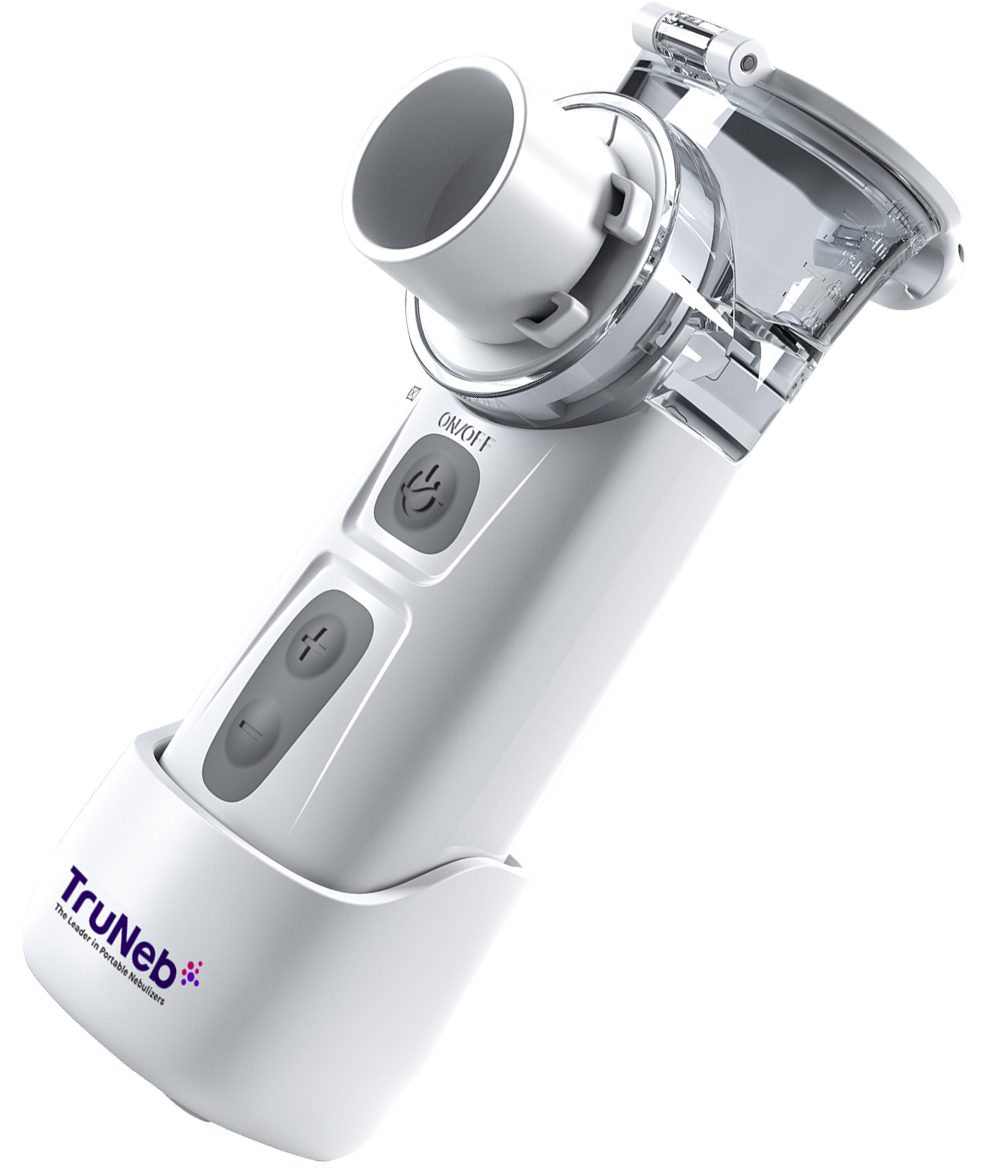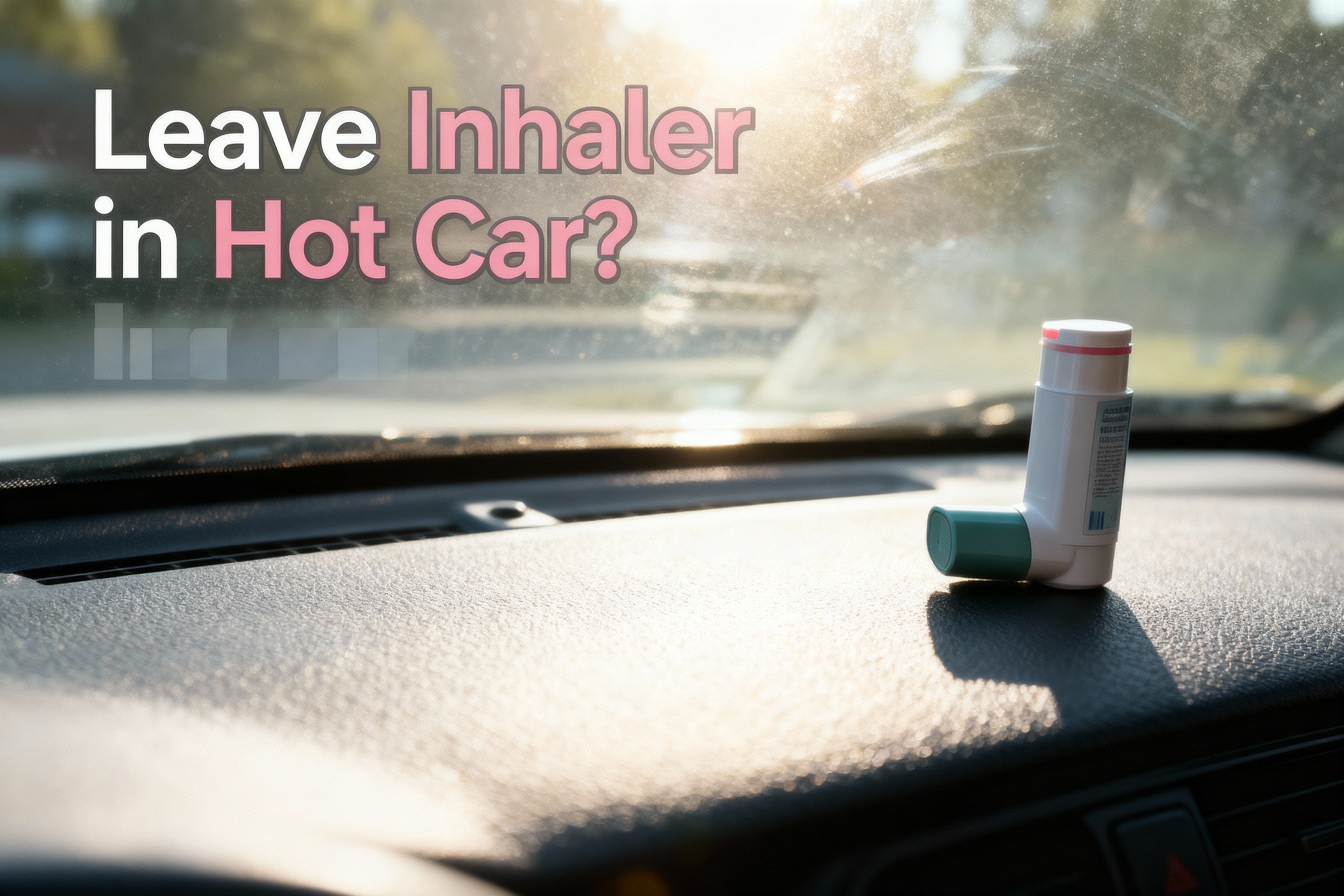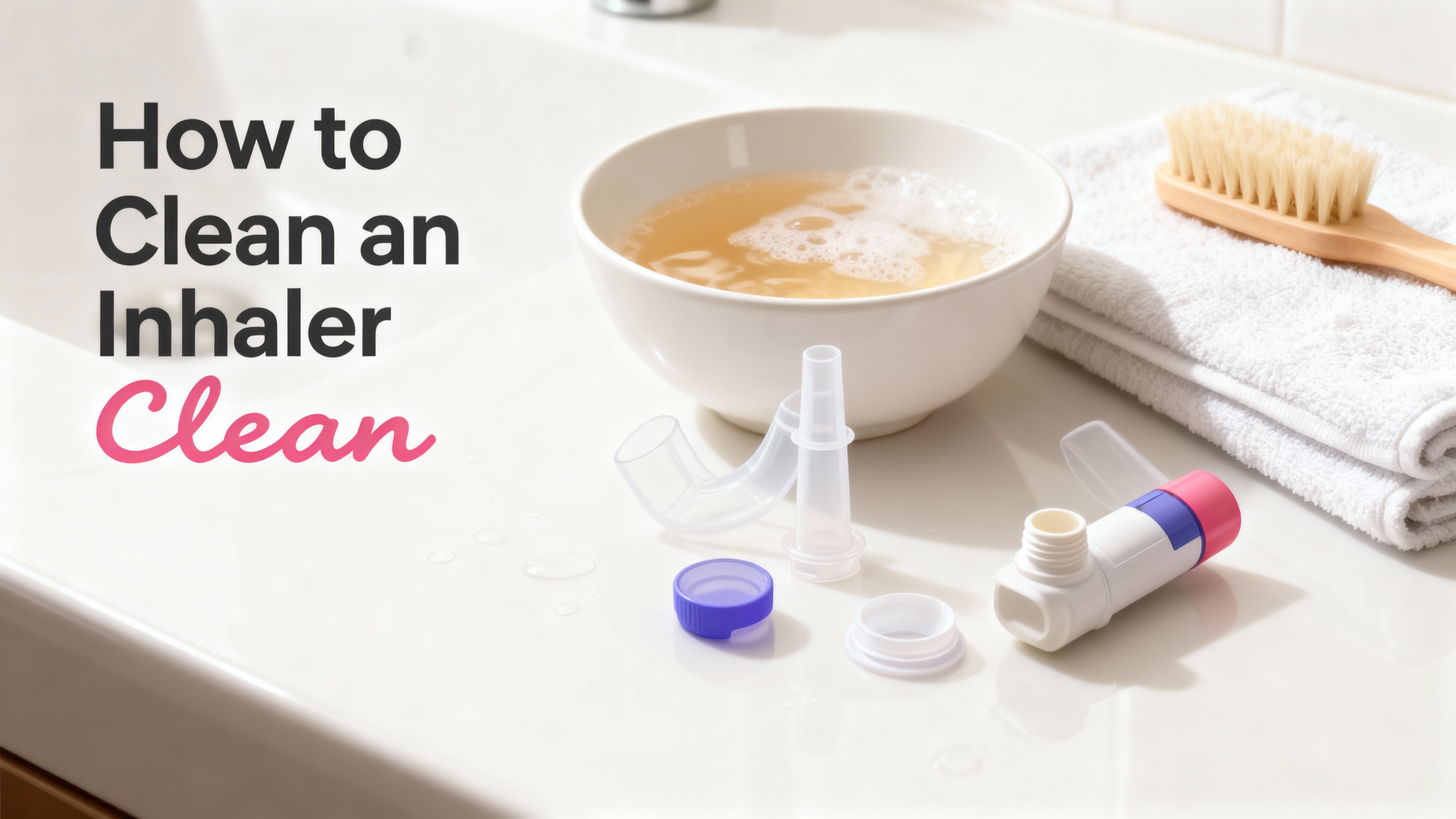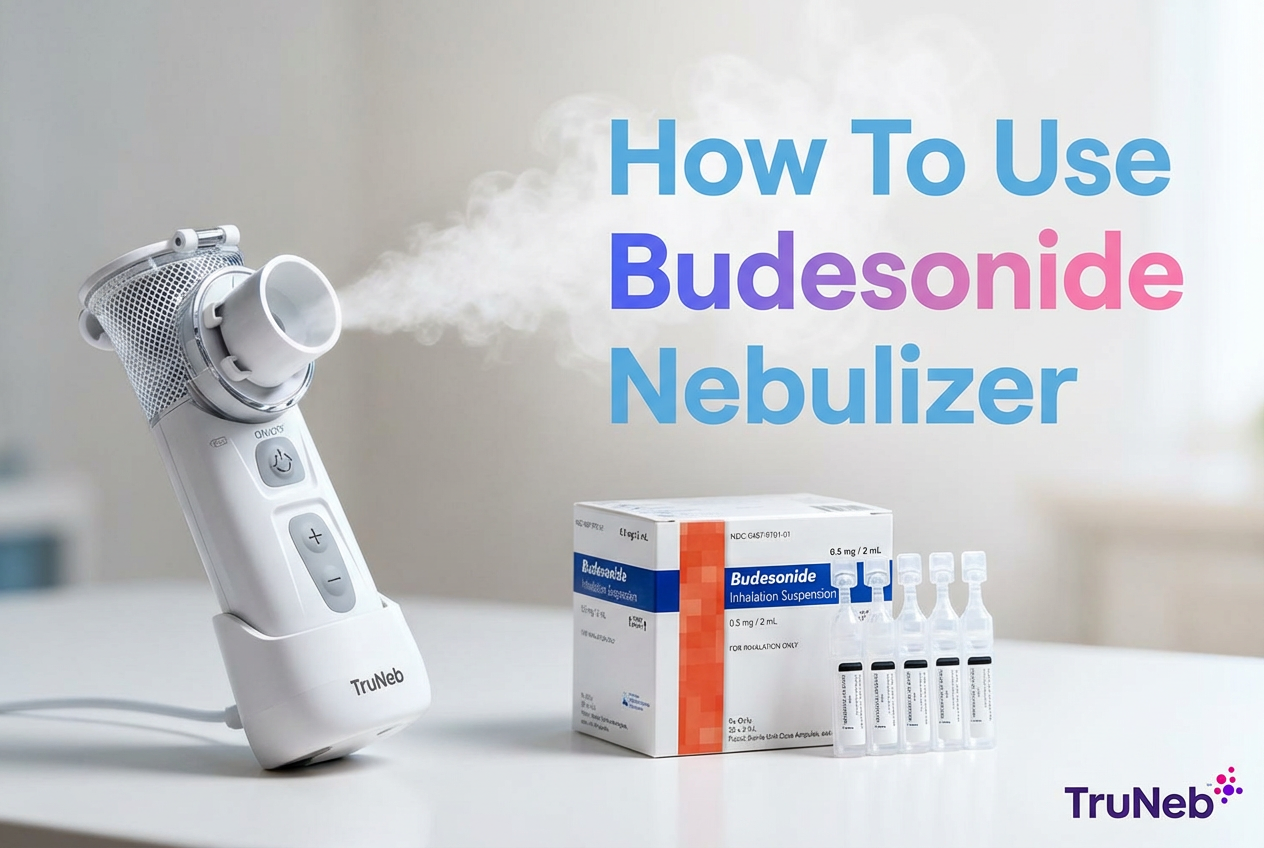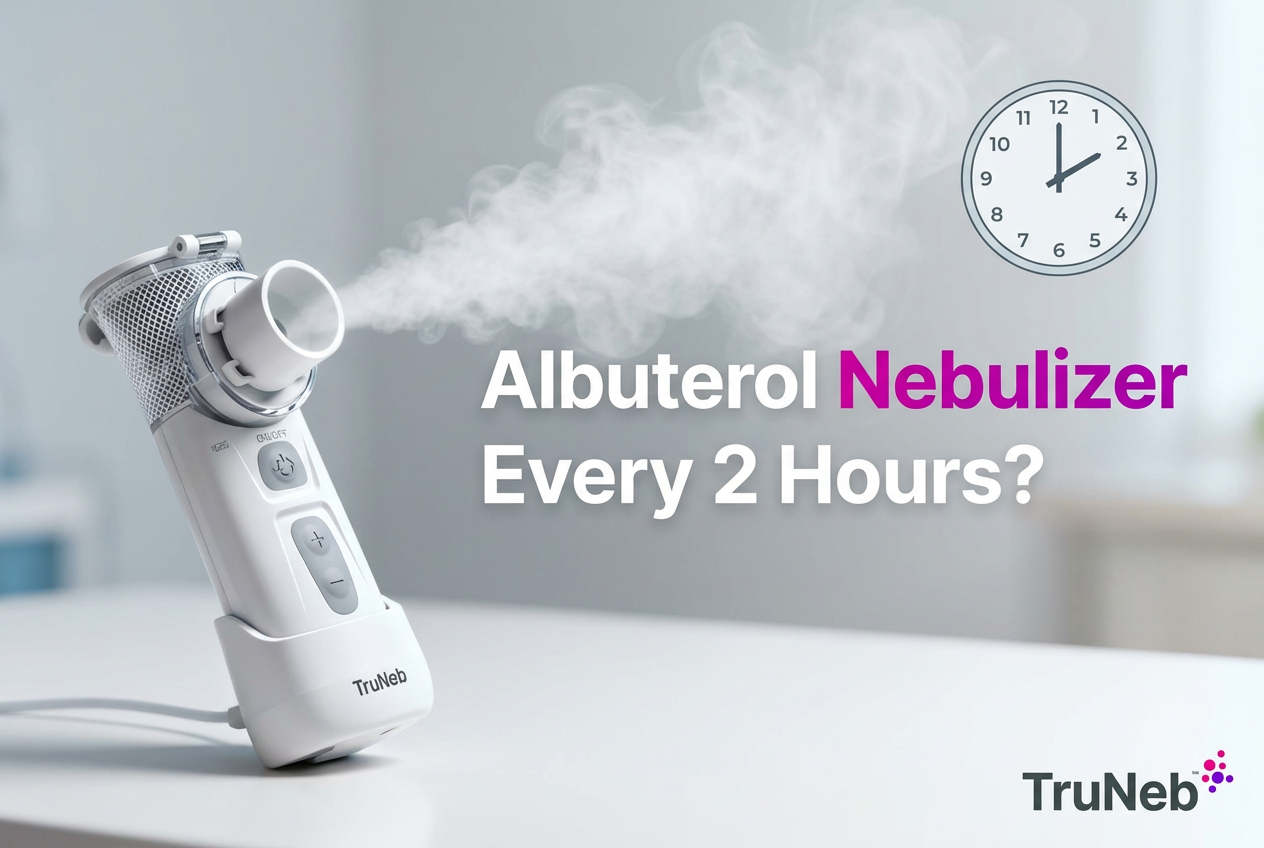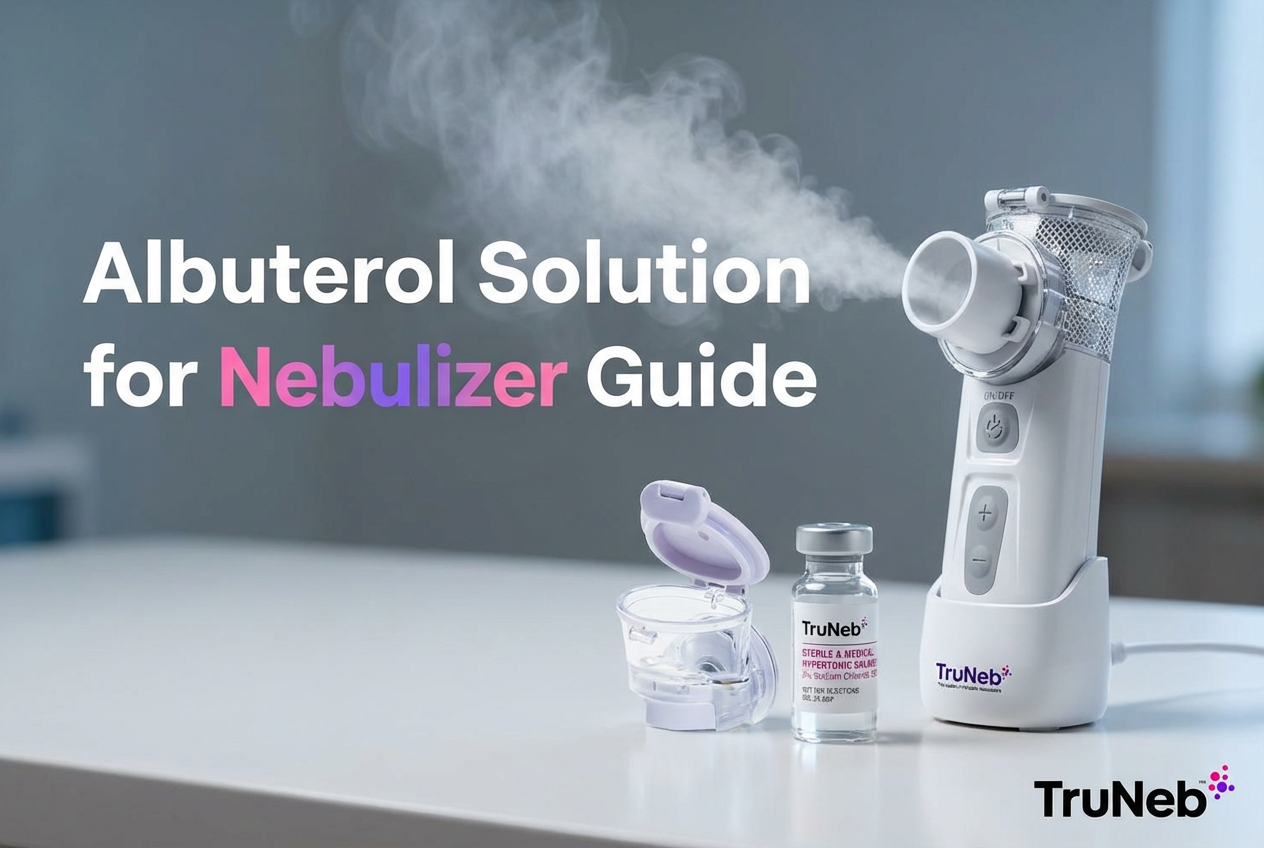On this page
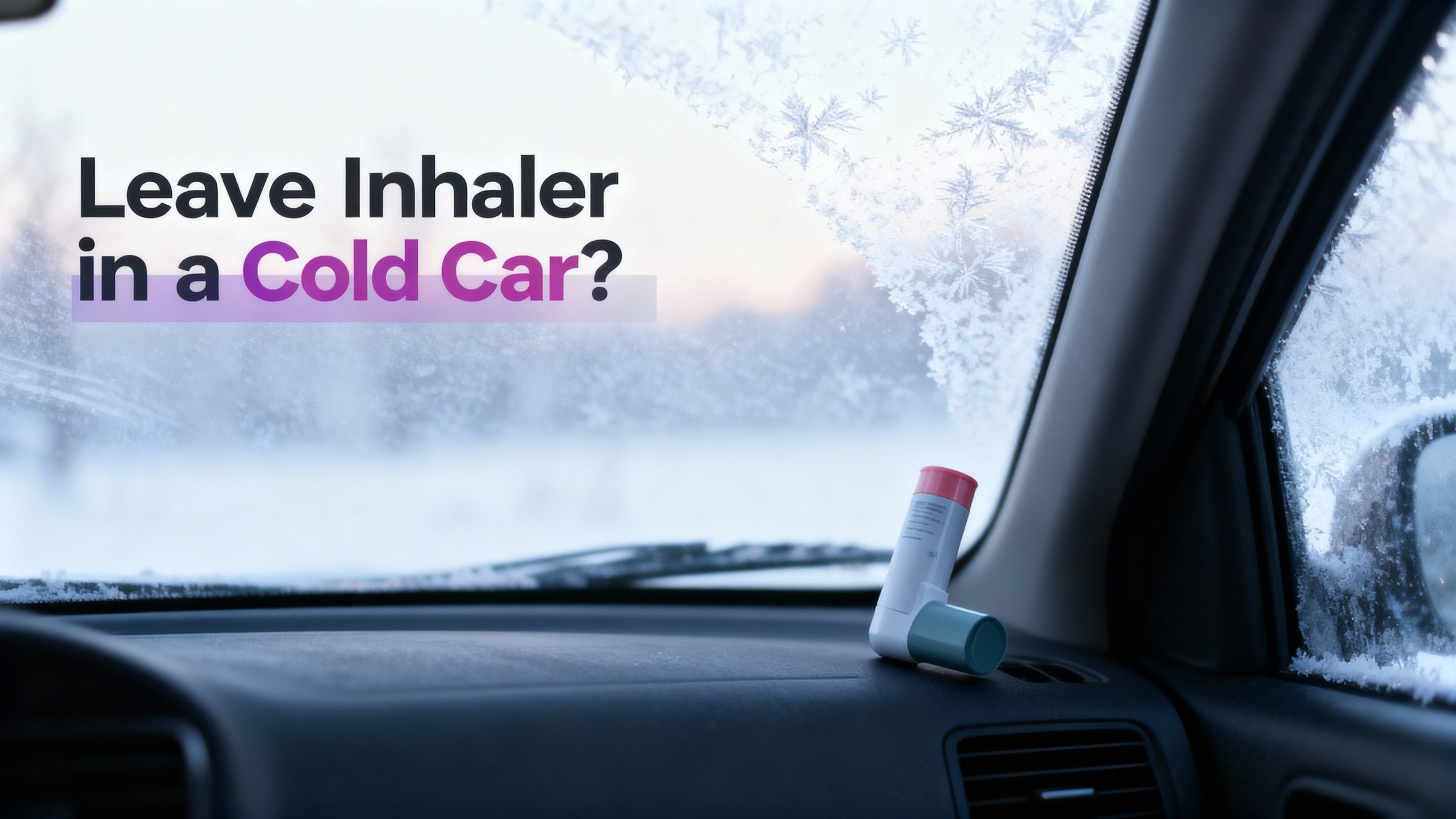
No. Leaving an inhaler in a cold car can make it spray weakly or not work at all. Metered-dose inhalers (like albuterol/Ventolin HFA) are designed for room temperature. In freezing weather, the propellant pressure drops and the mist can fail to deliver the right dose.
This applies to rescue inhalers (like albuterol) and maintenance inhalers used for asthma or COPD.
If it wasn't below freezing and only for a short time, it can work once it warms to room temperature. For best results, keep inhalers indoors and avoid cold-soaked cars in winter.
One-liner: Inhalers are temperature-sensitive; cold can cut the dose you actually get.
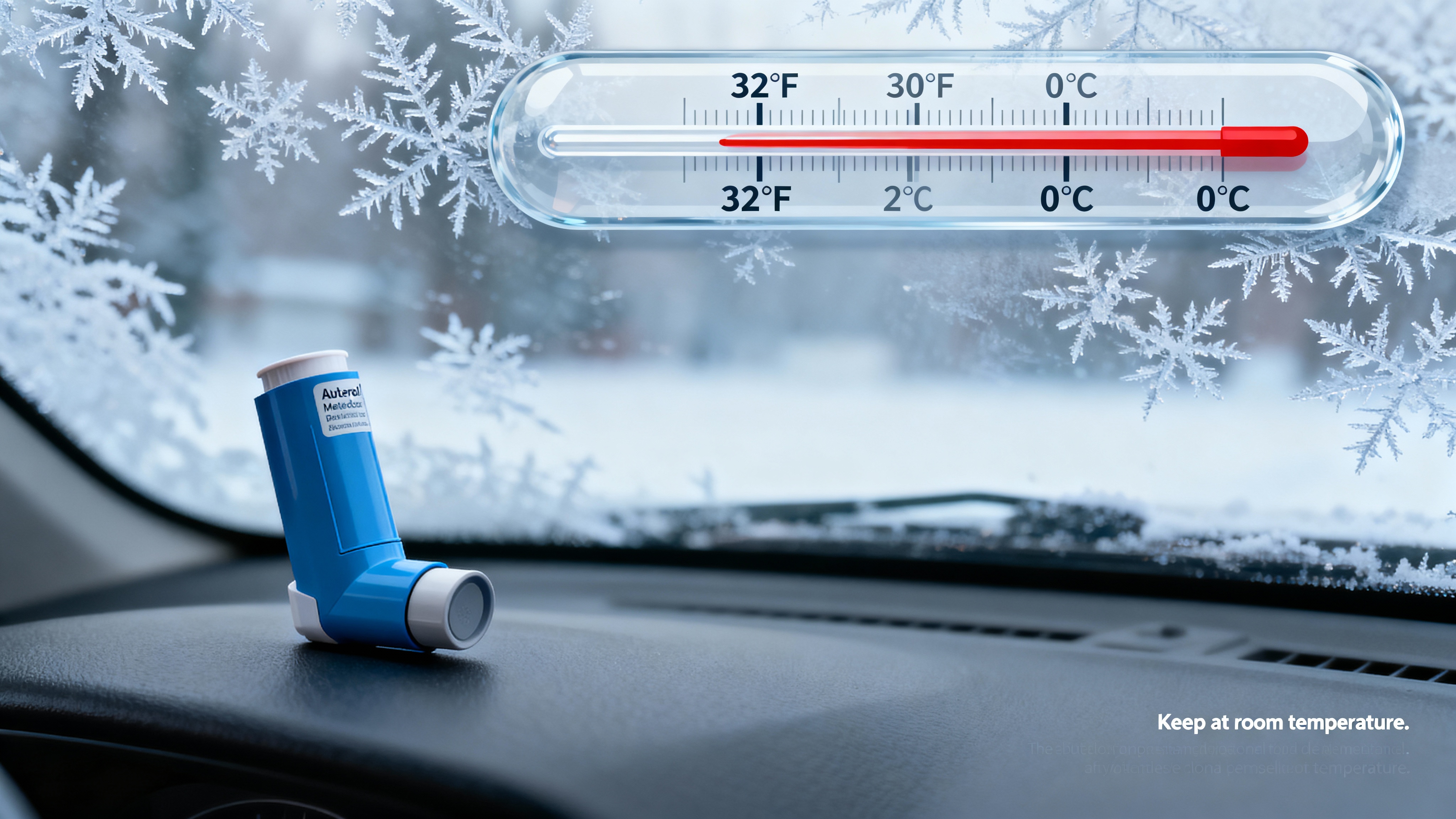
Why Cold Temperatures Can Mess With Your Inhaler
Cold changes how the spray forms and how much medicine reaches your lungs.
- Propellant pressure drops: MDIs use liquefied hydrofluoroalkane (HFA) gas to push out a fine mist. When the canister is cold, pressure falls, and the puff can be weak.
- Smaller, inconsistent dose: Research shows inhalers used at low temperatures deliver different particle sizes and less medicine per puff, which can reduce relief.
- Condensation can clog: Bringing a very cold device into warm air can cause moisture to form in the mouthpiece, which can block the nozzle or dampen powder.
- Stiff parts: Extreme cold can make plastic and seals less flexible, which can affect the valve.
Cold won't make an inhaler burst. That happens with high heat—above about 120°F (49°C) (see storage guidelines). The main danger in the cold is unreliable dosing right when you need it.
One-liner: Cold lowers propellant pressure and can change particle delivery, so you might not get the medication you expect.
| Temperature zone | Effect on inhalers | What to do |
|---|---|---|
| 59–86°F (15–30°C) | Recommended storage range | Keep at room temperature |
| ~40–59°F (5–15°C) | Performance may drop | Warm to room temp before use |
| ≤32°F (0°C) | High risk of weak or no spray; condensation possible | Bring indoors, warm slowly, test spray; replace if doubtful |
| ≥120°F (49°C)* | Canister damage/burst risk | Do not expose; replace if overheated |
*Per manufacturer warnings; avoid temperatures above 120°F (49°C). Always follow your inhaler’s label instructions.
Safe Storage Guidelines That Actually Work
- Keep inhalers at room temperature: about 59°–86°F (15°–30°C).
- Don't freeze. Avoid letting an inhaler sit at or below 32°F (0°C).
- Don't overheat. Avoid hot cars and direct heat; canisters can burst around 120°F (49°C).
- Keep it dry. Moisture can block the nozzle or clump powder.
- Skip the fridge. Typical refrigerator temps (35°–40°F / 2°–4°C) are too cold for most inhalers.
Tip: Store your daily inhaler in a spot you use often (a bedside drawer or a hallway shelf) so it stays in a safe temperature zone.
One-liner: Store inhalers at room temperature; don't freeze or overheat.
How Different Inhalers Handle the Cold
- Metered-dose inhalers (MDIs): Pressurized canisters (like Ventolin HFA) are most sensitive. Cold lowers propellant pressure, so the spray can be weak. Always warm to room temp before using.
- Dry powder inhalers (DPIs): No propellant. Cold air plus moisture can make the powder clump, which can reduce delivery. Keep dry and at room temp.
- Soft mist inhalers (SMIs): No propellant, but very cold temps can make the mechanism sluggish. Room temp use helps keep the spray consistent.
Maintenance MDIs (such as inhaled steroids) are just as temperature-sensitive as rescue MDIs.
Bottom line: All inhalers work best at room temperature, even if the reason is different for each device.
What To Do if Your Inhaler Was Left in a Cold Car
- Bring it inside and let it warm up slowly to room temperature. Don't use a microwave, hot water, or a heater.
- Check the device. Look for cracks, moisture in the mouthpiece, or anything unusual.
- Test spray (for MDIs and SMIs). After it warms, release a puff into the air to confirm a normal mist and sound. For DPIs, avoid wasting doses; if you suspect clumping or poor delivery, consider replacing it.
- If the spray is weak or inconsistent, or the dose feels off, replace the inhaler.
- If you need quick-relief medicine soon and you're not confident in the inhaler, get a new one.
- If you're unsure it's working, ask a pharmacist or your doctor.
Quick rule: If it was at or below freezing, be extra cautious—warming and testing are critical before you depend on the inhaler.
Cold-Weather Tips So You Don’t Get Stuck Without a Working Inhaler
- Keep your inhaler with you, not in a parked car. An inside coat pocket helps maintain a safe temperature.
- Use a small insulated pouch if you'll be outside for a while. It can buffer quick temperature swings.
- Don't store spares long-term in cars, garages, or sheds. Keep backups at home, school, or work where it's climate-controlled.
- Do quick checks in winter. If you think it got too cold, warm it up and test before you need it.
- You might see products labeled "steam inhaler"—these are not nebulizers and aren't for breathing medications.
If you use a portable nebulizer for home treatments, keep the device and solution vials indoors. Cold solution and tubing can perform poorly.
One-liner: Keeping your inhaler on you—warm and dry—is safer than leaving it in a parked car.
⚠️ If you're very short of breath, have blue or gray lips or fingernails, can't speak full sentences, or your rescue inhaler isn't helping, seek emergency care right away. Use your Asthma Action Plan and talk to your doctor if your symptoms don't improve.
A Quick Option for Home Treatments in Winter
A TruNeb™ portable mesh nebulizer can help with at‑home treatments when it's icy outside. Keep the device and medication vials at room temperature for best results. TruNeb is a portable mesh nebulizer for quiet treatments at home. Still, carry your rescue inhaler correctly and keep it warm when you go out.
One-liner: A portable nebulizer like TruNeb is for home treatments; your rescue inhaler still needs proper storage when you're out.
Frequently Asked Questions
Tap or click a question below to see the answer:
Yes. Below freezing (32°F/0°C), MDIs may spray weakly or not at all until warmed. Even afterward, the dose can be inconsistent.
It's safer not to. Cars cool quickly. If it did get cold, warm to room temperature and test before relying on it.
Heat above about 120°F (49°C) can cause canister damage or burst risk. At or below 32°F (0°C) cold can cause weak or no spray. Room temperature (59–86°F / 15–30°C) is the safe zone.
No. 35–40°F (2–4°C) is below the recommended range and can hurt performance.
Yes. Cold can reduce MDI spray performance, and condensation can clump powder in DPIs. Keep all inhalers at room temperature.
Key Takeaways
Keep inhalers at room temperature. Freezing cold can make the spray too weak to help, and high heat can be dangerous. If your inhaler got cold, warm it slowly, test it, and replace it if anything seems off. When in doubt, ask your pharmacist or doctor.
Disclaimer: This article is for informational purposes only and isn't a substitute for professional medical advice. Always talk with your doctor about your symptoms, medications, and treatment decisions.

